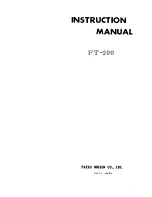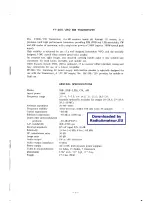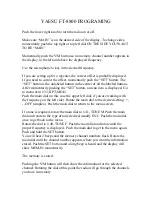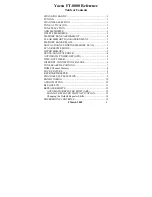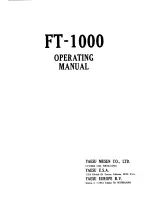
Rev. 1.0
Principles of Operation
4—3
The audio processor board (Illustration 4-2) performs five functions:
• Balanced input amplifier
• Gain selection
• Low-pass filter
• Signal compression, limiting and expansion
• Pre-emphasis
Each of these functions are discussed in the following section.
4.2.1
Balanced Input
Audio input from the rear-panel, XLR connectors route to differential-input
amplifiers and then to a buffer amplifiers. The front panel gain switch sets one of
four gain levels at the output of the buffer amplifiers. The output of the buffer
amplifiers drive both the front panel indicators and a low-pass filter stage on the
Stereo Generator board.
4.2.2
Audio Processor
The audio processor section provides the following audio control functions:
• Compressor
• Limiter
• Expander
The audio signal is passed through a low-pass filter on the Stereo Generator board
(see Section 4.3.1). After the signal renenters the processor board an additional
third-order, low-pass filter attenuates products below 30 Hz. The audio processor
then takes the incoming audio—ranging in level from -20 to + 5 dBm—and
modulates the transmitter to a consistent, easily understood level, without
overmodulation.
Illustration 4-2 Audio Processor Board
Audio
Processor






























